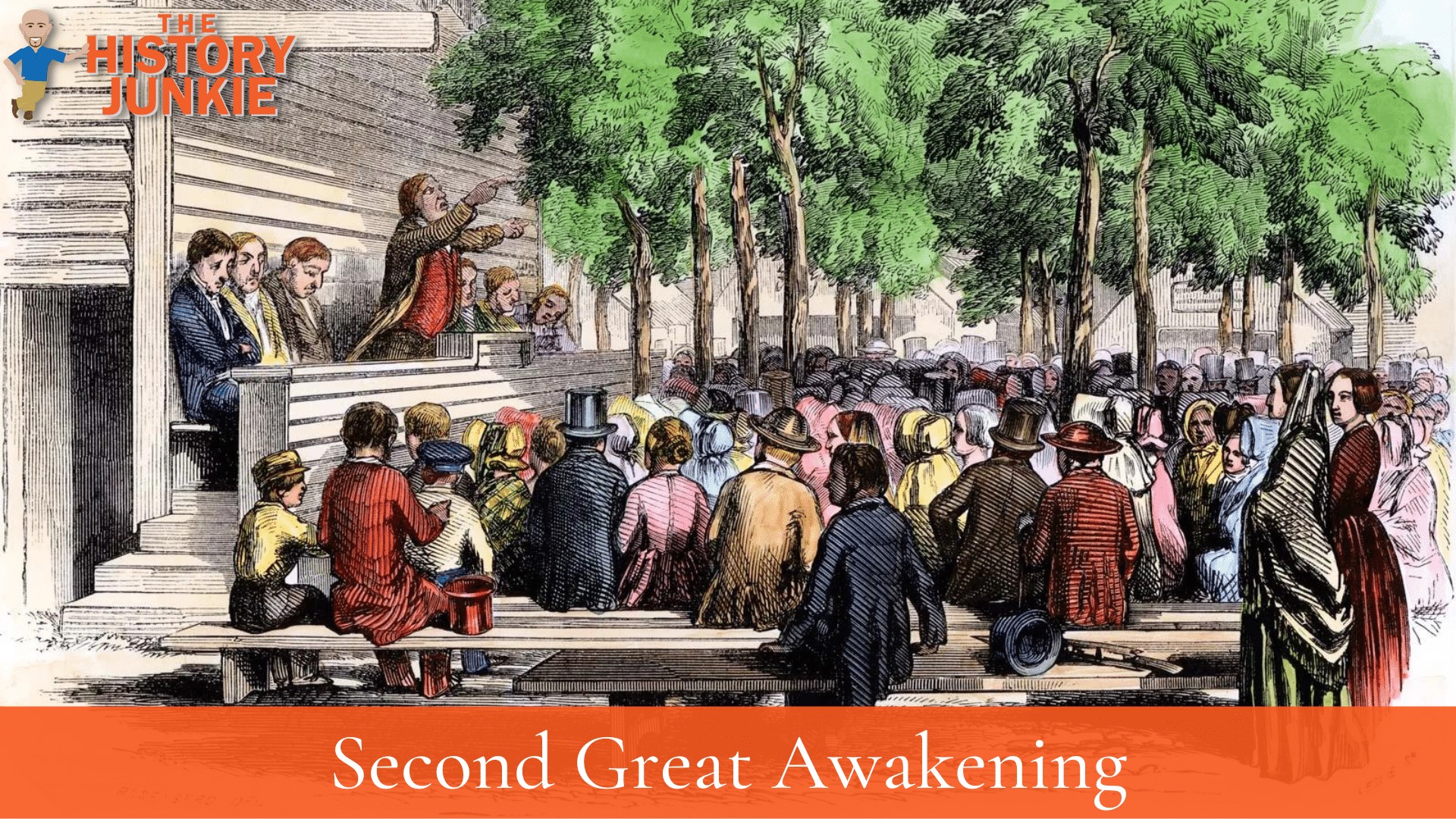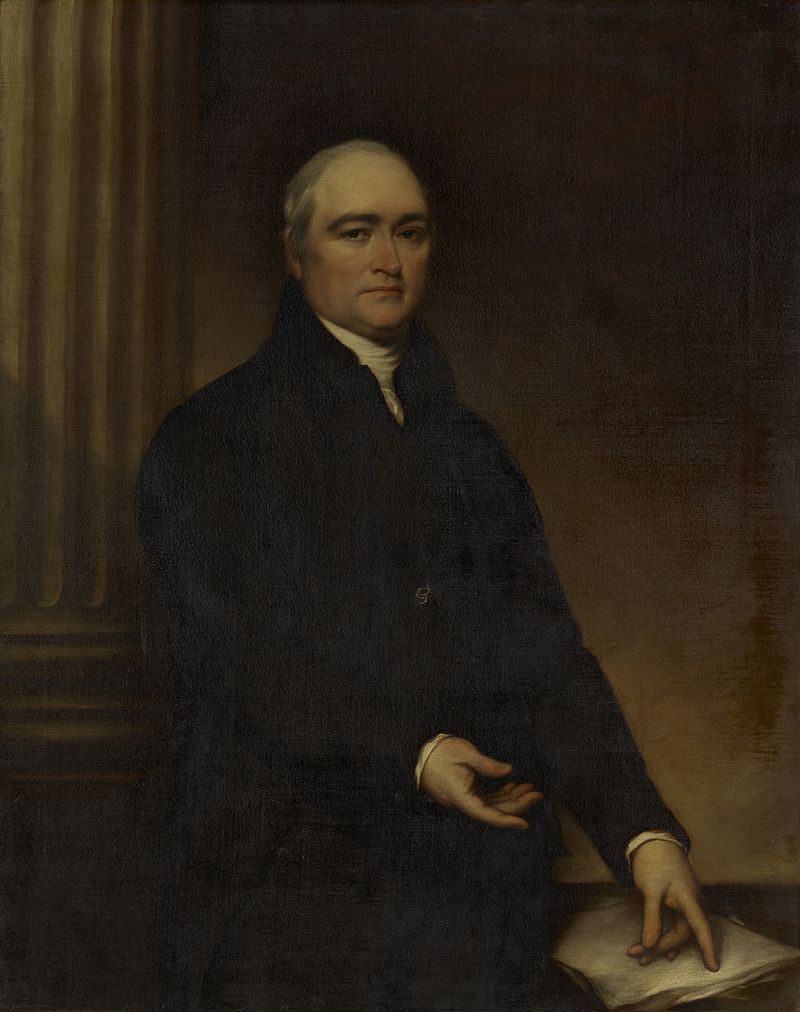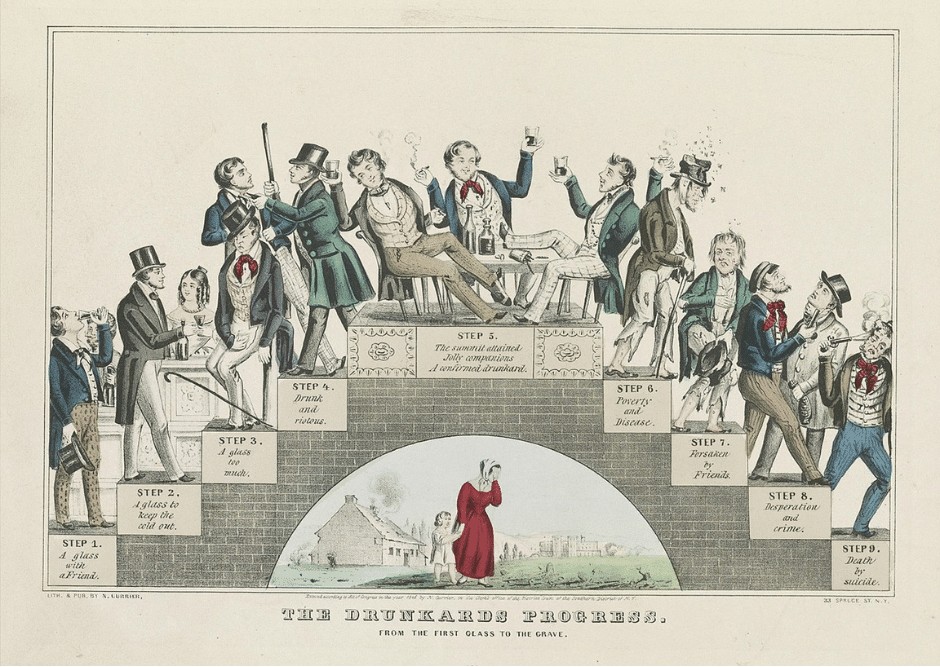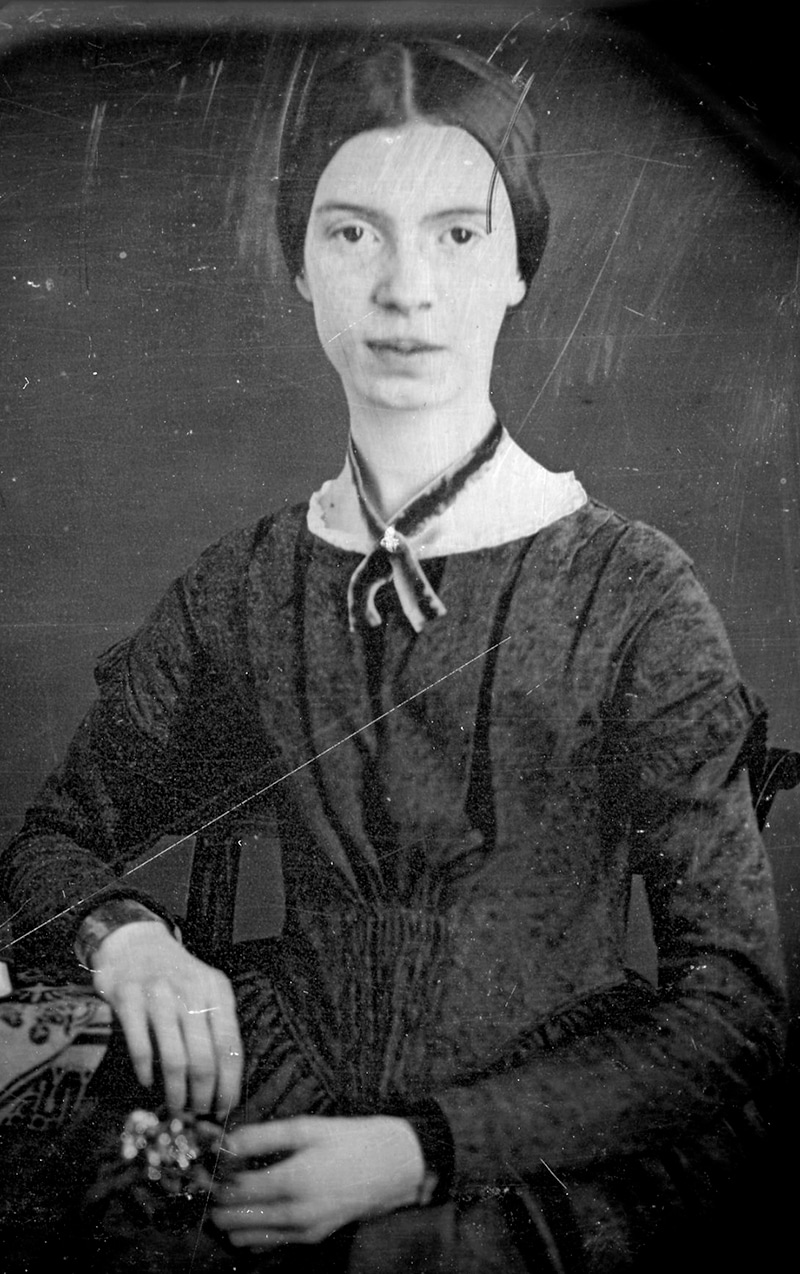The Second Great Awakening was a major religious movement in the U.S. that reached out to the unchurched and brought large numbers of people to a vivid experience of Christianity, fueling the rapid growth of numerous denominations, especially the Methodists, Baptists, and Disciples.

It came to a half-century after the First Great Awakening and consisted of renewed personal salvation experienced in revival meetings.
Major leaders included Charles Grandison Finney, Lyman Beecher, Barton Stone, Peter Cartwright, and James B. Finley.
Jump to:
William Miller led a premillennial movement in New York that predicted the Second Coming on Oct. 22, 1844; after that non-event, a remnant formed the Seventh-day Adventist Church.
New England

In New England, the renewed interest in religion inspired a wave of social activism centered in the colleges where religion had previously been disregarded. President Timothy Dwight of Yale College took the lead in chapel sermons and classroom discussions, which motivated the students and prepared the way for a renewed religious interest.
A revival began in 1802 and resulted in the conversion of a third of the Yale student body.
The Awakening spread to other colleges, and soon, a stream of young college graduates was entering every form of religious work, particularly the Christian ministry and education and home and foreign mission enterprises.
In western New York, the spirit of revival encouraged the emergence of new denominations, especially the Mormons and the Holiness movement.
In the west, especially Cane Ridge, Kentucky, and in, Tennessee-the revival strengthened the Methodists and the Baptists and introduced into America a new form of religious expression-the, the Scottish camp meeting.
Guelzo (1997) highlights the key role of Charles Grandison Finney (1792-1875) by placing him in the tradition of Jonathan Edwards's Calvinism.
Finney was not a rebel against the New England theology; he was actually an heir to this tradition and resistant to popular notions of free will that challenged the New England culture.
Such a reevaluation questions the view that the Second Great Awakening fits into a "declension" model in American religious history and forces a new understanding of the connection between this movement and American commercial markets.
Missionaries
The Congregationalists set up missionary societies to evangelize the West. Their most successful missions were in Hawaii, where they converted most of the natives.
Missionaries were preachers and educators, as well as exponents of Yankee culture. Publication and education societies promoted Christian education; the most notable among them was the American Bible Society, founded in 1816.

Social activism inspired by the revival gave rise to abolition groups as well as the Society for the Promotion of Temperance and began efforts to reform prisons and care for the handicapped and mentally ill.
They believed in the perfectibility of people and were highly moralistic in their endeavors. From the 1820s through the 1860s, missionaries saw themselves simply as communicators of the gospel who had come to found native churches among the heathen.
They did not see themselves as modernizers or transformers of culture; that new role came during the Third Great Awakening.
The first women missionaries from America were products of the equalitarianism of the Second Great Awakening.

West
The great Cane Ridge revival in 1801 in frontier Kentucky set the pattern for western revivals, which more closely resembled the First Great Awakening in New England; the use of camp meetings was inspired by revivals in Scotland.
The camp meeting was a two-day (or longer) event, half religious and half social, as it brought together settlers scattered over a wide area. Teams of preachers rotated in a continuous stream of sermons as oxen were roasted and old friends and new mingled.
The converts joined small local congregations, which eventually might build a log-cabin building as a church; more often, services were held in fields or private homes.
Cane Ridge and some other western revivals were multi-denominational and included Methodist, Presbyterian, Baptist, and Restorationist or Campbellite preachers (who later formed the Church of Christ and the Disciples of Christ denominations).
The result was less isolation and individualism and a greater sense of group identity through the local church.
Later revivals took on much more of an Arminian emphasis that everyone can be saved, but during the initial Kentucky camp meetings, Calvinism and predestination still dominated religious beliefs.
Eslinger argues that the most important function of the early camp meeting was not that it offered people a form of worship more reflective of the emerging liberal culture but rather that it "enabled great masses of people to relate to that new culture more comfortably."
The Western revival quickly Christianized large parts of Kentucky, Tennessee, and southern Ohio and Indiana.
Each denomination had assets that allowed it to thrive on the frontier. The efficient Methodists had a method (hence their name), which used itinerant circuit riders assigned to territory by the bishop.
He rode the circuit to different locations, recruiting and ministering on a regular schedule. Baptists used local preachers who their neighbors could see as having a special “call” from God.
Long (2002) notes that since the 1980s, scholars have connected American religious camp meetings, formerly thought to have their roots only in the American frontier experience, to Scottish holy fairs of the 17th-18th centuries.
Long (2002) examines the sacramental theology in the communion sermons of James McGready given in Kentucky during the first decade of the 19th century.
McGready's sermons demonstrate adherence to reformed theology, a Calvinist understanding of salvation, and a sacramental emphasis.
A central theme of McGready's sermons stressed the believer meeting Christ at the communion table.
America's God
It was a powerful, potent compound of the evangelical Protestant religion, liberal republican political ideology, and common sense moral reasoning, and it came to infuse public life.
The synthesis had plausibility, flexibility, and popularity were the key to the remarkable Christianization that took place in both North and South between 1790 and 1865.
This synthesis was what won evangelicals their right to a public voice in the wake of the American Revolution and enabled them to build the nation's social and intellectual culture during the first half of the 19th century.
The unique synthesis, coupled with the active participation of evangelicals in public life, profoundly reshaped Christian theology in America.
Impact on denominations
The Second Great Awakening exercised a profound impact on American religious history. The numerical strength of the Baptists and Methodists rose relative to that of the denominations dominant in the colonial period Anglicans, Presbyterians, Congregationalists, and Reformed.
Efforts to apply Christian teaching to the resolution of social problems presaged the Social Gospel of the late 19th century.
The United States was becoming a more culturally diverse nation in the early to mid-19th century, and the growing differences within American Protestantism reflected and contributed to this diversity.
The Awakening influenced numerous reform movements, especially abolitionists.
Impact on individuals

The adolescence of poet Emily Dickinson was marked by the intense religious revivals that made Amherst College and her family's church, The First Congregational Church of Amherst, a major locus of influence in 1845-46 and in 1850, during the second phase of what is now called the Second Great Awakening.
The impact of these revivals on Dickinson, who was the only member of her family and close circle of friends who did not convert to Christianity and join her family's church by the public profession of faith.
Through close readings of poems, her early letters, and certain letters by Dickinson family members, Dickinson's work appears as a rebellion against the religious orthodoxy of the mid-nineteenth century Western Massachusetts and presents Dickinson as caught between two counter forces: the Calvinist tradition of examining one's inner life in preparation for religious conversion and the current pressure at revivals to stand up in front of a crowd and deliver a formulaic statement of faith.
Opposition
Reeves (2005) examines the historical context, spiritual development, and theological arguments of four Protestant critics of Second Great Awakening revivalism who published critiques from the mid-1830s to the late-1840s: Calvin Colton, John Henry Hopkins, John Williamson Nevin, and Horace Bushnell. (Conservapedia)
Historians have begun to give increased attention to the role played by critics of revivalism in the Great Awakening of the eighteenth century, but inadequate attention has been devoted to critics of revivalism in the Second Great Awakening.
Several competitors vied for the right to define revivalism in the Second Great Awakening. New Divinity revivalists legitimated their revivals by the construction of an Edwardian tradition of sober revivalism, but their definition of genuine revival was contested not only by Frontier, New Haven, and New Measures revivalists but also by critics who questioned the underlying theological assumptions of revivalism.
The counter-revivalists were not merely reactive; they sought to counter revivalism by formulating alternative understandings of Christian theology and spirituality.
High Church Episcopalians Calvin Colton and John Henry Hopkins argued for the superiority of the Episcopal Church; Colton praised his church's refusal to meddle in political affairs in the manner of revivalistic reformers, and Hopkins appealed to his church's faithfulness to the pattern established by the "Primitive Church" of the first four centuries against the "novelties" of revivalism.
John Williamson Nevin criticized revivalism's subjectivism, countering with churchly piety, grounded on the objective presence of Christ in the sacraments. Nevin envisioned an alliance between the German Reformed and German Lutheran Churches as a bulwark against Americanized evangelicalism.
Horace Bushnell criticized revivalism for its supernaturalistic dualism; as an alternative, Bushnell offered a Romantic revision of the means of grace, in which parents could shape the Christian character of their children through the power of organic connections.
The counter-revivalists in this study offered counter-narratives set against prevailing revivalistic norms to offer an alternative understanding of American religious culture and to open up new directions for the future of Christian piety and theology.
It should also be noted that at least two major denominations, which are considered "cults" by mainstream Christianity, arose during this period: the Seventh-Day Adventists and the Church of Jesus Christ of Latter-Day Saints.

The Churches of Christ, controversial for teaching that only Christians who are baptized "for the remission of sins" (a practice only they do) are genuine believers, also started during this period.
Political Implications
In the midst of shifts in theology and church polity, American Christians took it upon themselves to reform society during this period.
Known commonly as antebellum reform, this phenomenon includes reforms in temperance, women's rights, abolitionism, and a multitude of other questions and problems faced by society.
The abolitionist movement especially was a product of the Second Great Awakening in the Northeast. The Congregational and Presbyterian churches were especially influential.
Men were the leaders, but women were more numerous, and over 200 women's antislavery societies were organized. The men gave speeches and wrote pamphlets.
The women's groups raised funds, distributed pamphlets, collected signatures to petition Congress, networked with women from the English antislavery movement, and welcomed black women abolitionists
